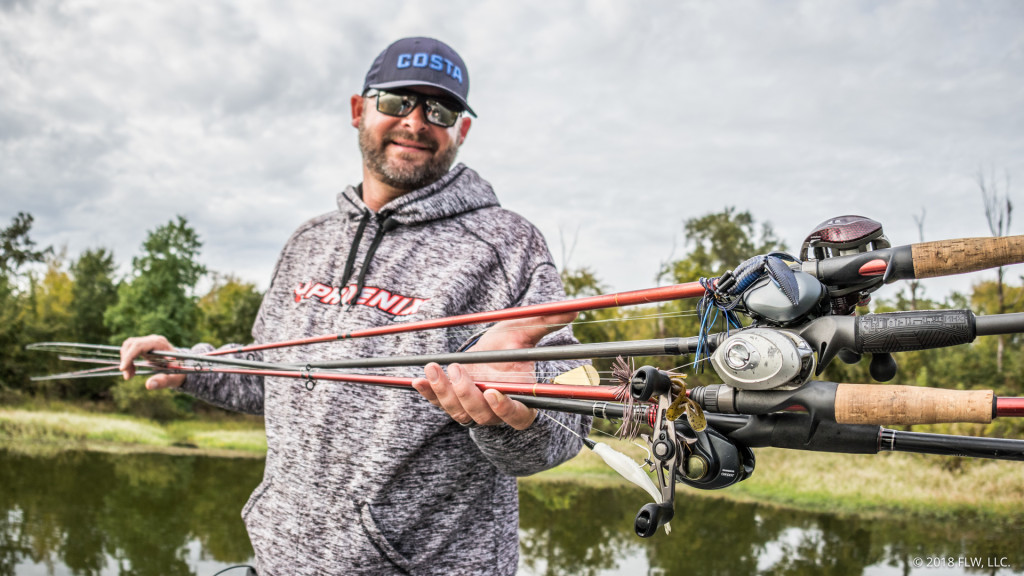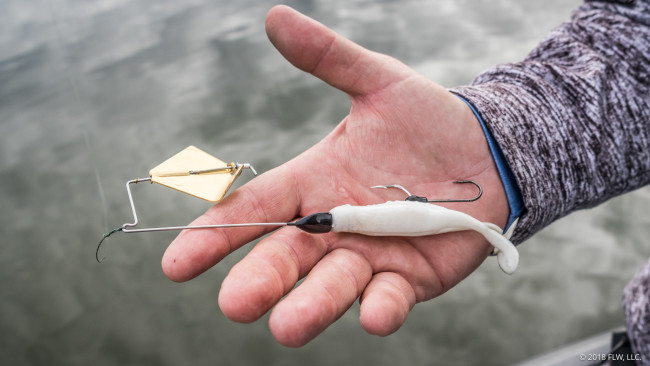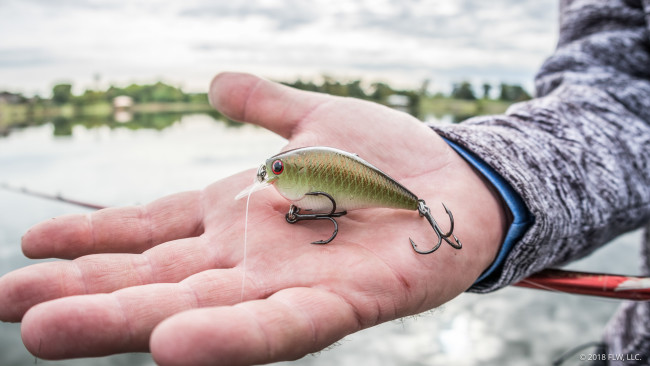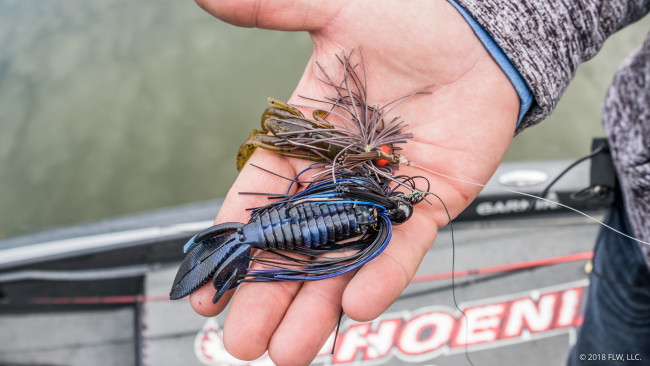Hallman’s 5 Go-To Baits for New Lakes
What the Oklahoma pro leans on when he’s someplace new

Deciding how best to figure things out on a new lake is one of the toughest challenges Tour pros and regular anglers alike encounter. Sometimes familiarity with the style of lake makes it easy, but other times you eventually need to stretch well outside of your comfort zone. Bradley Hallman has had success all over the country, and he’s got a stable of baits that he likes to rely on early in the process of breaking down a new lake.
Your starting baits might be a little different, but Hallman’s approach to new water is worth considering.

The baits
Hallman’s starting five are mostly simple, power-fishing baits. Regardless of where he’s at, he’ll have a buzzbait with a toad tied on, as well as his “Little Brown Jig,” a 1/2-ounce flipping jig, a swim jig and a Lucky Craft RC 1.5 square-bill.
Assuming a morning start, the Oklahoma pro likes to begin on top.
“The first thing I’m going to start with is a buzzbait, just because I can flat-out cover so much water,” explains Hallman. “I’ll turn the trolling motor on high and go to lookin’. I’m looking at the water depth on the cover, what the bottom is made of, anything that will clue me in. I can catch them on the buzzbait from Table Rock to the California Delta, and if I get a few bites on it the potential for those bites to be quality bites is pretty good.”

On lakes with rock, laydowns or riprap, Hallman will mix in the crankbait to cover water and target fish as well. On lakes with grass, he really likes the swim jig. Though there may be better baits to catch fish on in a tournament, he feels like a swim jig is one of the best to simply find bites in the early stages.

His other two jigs – the small Eakins Jig that he calls his “Little Brown Jig” and the 1/2-ounce flipping jig – fit his style, and are at least somewhat rooted in his upbringing in Oklahoma.
“I can throw the brown jig anywhere – on rock, deep, shallow or on docks,” says Hallman. “For flooded bushes, or things that are thicker and heavier, that’s where that 1/2-ounce flipping jig is going to come in. The flipping jig is primarily a springtime thing for me. It’ll go away in the summer and get switched over to a football jig, a worm or something along those lines.”
Beginning tips
Starting on a new lake isn’t all about the baits of course. How you work off your strengths and the seasonal patterns in play is important as well.
“Seasonal patterns rule the day,” says Hallman. “At Smith Lake, it was spring and they were spawning, and I still didn’t fish the bank. It’s my style, and I should have. On the other hand, in July, I’m not going to sit there and beat on 6 inches of water unless there’s current or muddy water that keeps them shallow.”
One of the reasons Hallman likes to start shallow in most seasons is because of “how his mind works.”
“I’m visual,” explains Hallman. “I feel like I can cover and break down water faster with my own eyes than by what I can see on a graph or feel with a rod and reel.”
You might be more comfortable dragging or idling to get the vibe of a lake. For Hallman, the time to really lean into his electronics is more in the summer.
“If it’s summertime and the bank was slow in the morning I’m headed out to start looking offshore,” says Hallman. “I really enjoy offshore fishing. I like TVA stuff, and I like brush pile fishing. That takes a little more time; it’s not something you can jump right into in a three-day practice as easily. But with today’s electronics it’s not too time consuming to find brush piles. It can be pretty fast.”
However you end up breaking down a lake or a day on the water, being really good at it is an invaluable thing. If one of Hallman’s tips helps you speed up the learning process by even a minute you’ve gained something. After all, it only takes one cast to change a tournament.